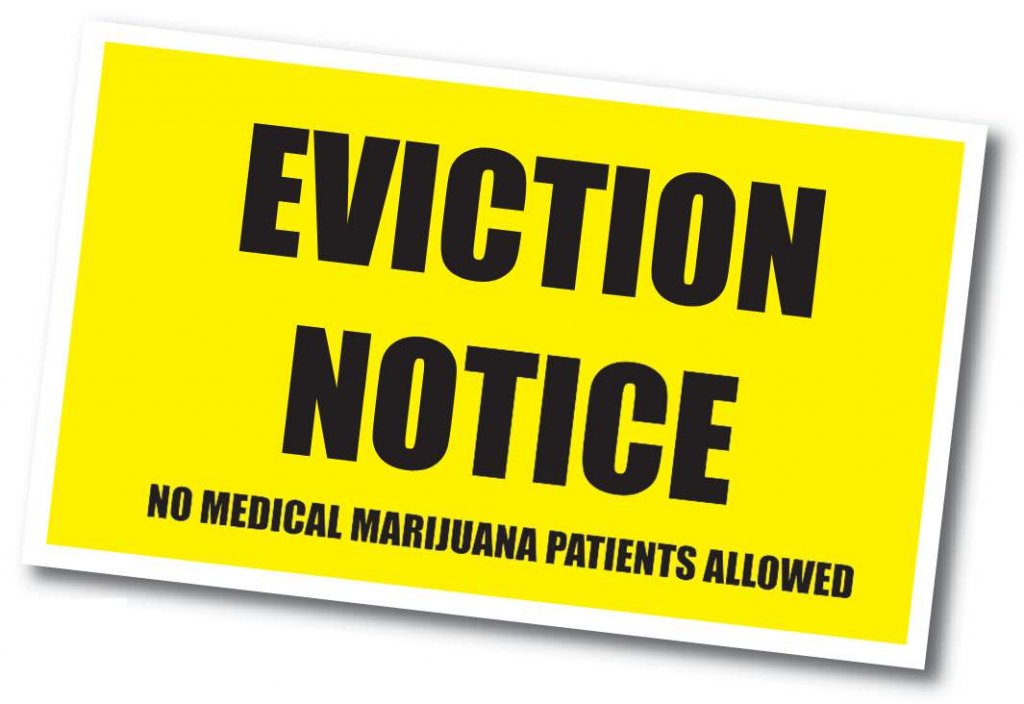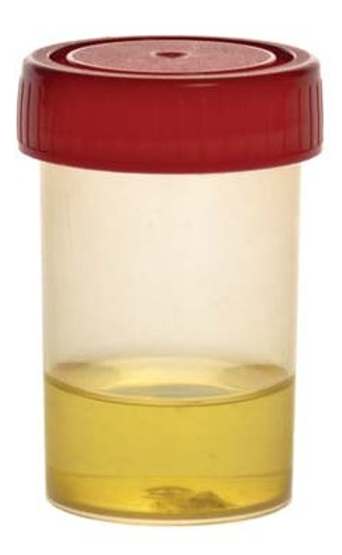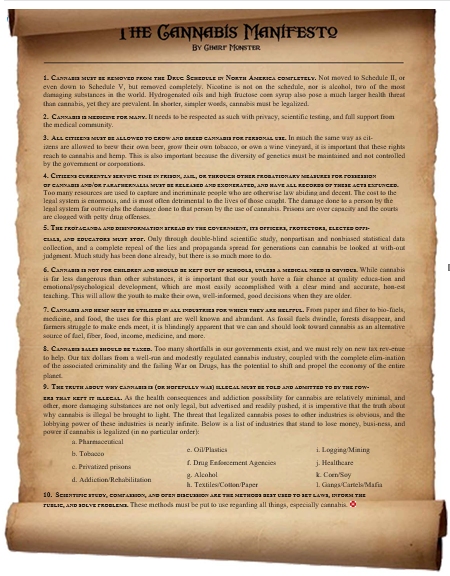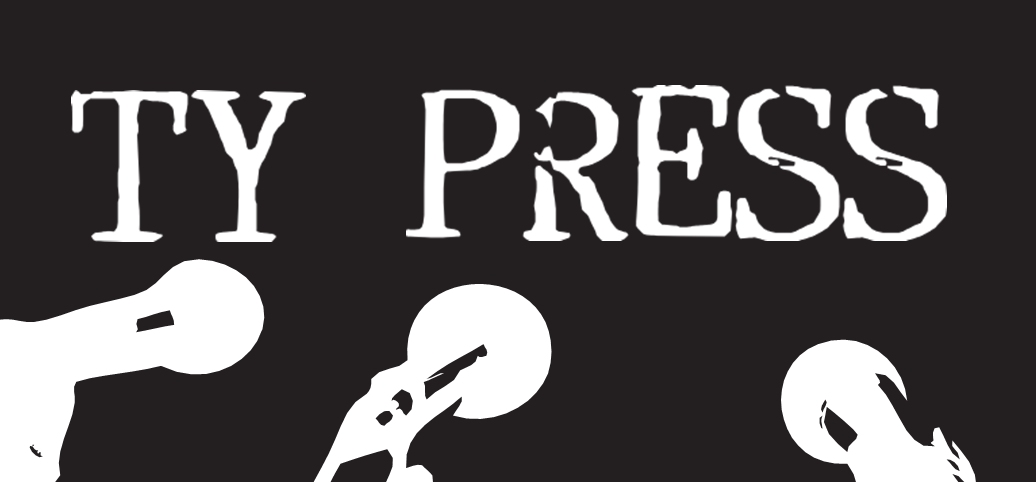
When Your Medicine is not Their Medicine
Public Housing Crackdown in Medical Marijuana States
by Mary Lou Smart
The status of cannabis as a Schedule I drug under the Controlled Substances Act means much more than a prohibition on scientific research that would benefit mil- lions of patients that rely on a safe, age-old remedy. What happens when a federal overlay of bureaucracy circumvents state law by weaving its way in through areas of low resistance is discrimination of the sick, disabled, elderly and incredibly disadvantaged that our laws were designed to protect.
Following federal interpretation of federal housing assis- tance, public housing agencies (PHAs) and privately- owned properties receiving federal assistance through- out the United States are rapidly revamping policies to protect themselves.
In January 2011, the U.S.
Department of Housing and Urban
Development (HUD) issued
a memo, Medical Use
of Marijuana and Reasonable Accommodation in Federal Public
and Assisted Housing, which addresses what is allowed under federal and state nondiscrimina- tion laws. Reasonable
accommodation is the key phrase as
the mission of public housing is supposed to be fair housing.
The memo first finds that owners of
federally- assisted housing and PHAs not only
have no obligation to house medical marijuana patients, they are
not allowed to do so because there are no protections for people using illegal drugs under
Section 504 of the Rehabilitation Act
and the Americans with Disabilities Act
(ADA), and such accommodation is not considered
reasonable under the Fair Housing
Act. The first refer-
ence in this long-winded dissertation declares that “medical marijuana refers to marijuana authorized by state medical marijuana laws and the “use” of medical marijuana encompasses the use, unlawful possession, manufacture, and distribution of marijuana, as prohib- ited by the Controlled Substances Act (CSA).” The memo goes on to reviews state laws, mentioning narrow exemptions from prosecution under state law for quali- fying patients, and reaffirming zero protection under federal law.
From the start, the memo makes it clear that nobody running a public housing operation can allow any appli- cant that admits to using medical marijuana to receive any kind of assistance or to move in.
The second part of the memo deals with the many med- ical marijuana patients already living in public housing. For this the memo refers to the Quality Housing and Work Responsibility Act of 1998 (QHWRA), another bureaucratic wonder that declared that PHAs and own- ers have the discretion to toss anyone whom they deem to be illegally using a controlled substance out of public housing.

When it comes to marijuana’s strange placement with dangerous narcotics, a refresher is always in order. When the Controlled Substances Act was first passed in 1970, many legislators questioned why a harmless plant that had been used throughout history as medicine would be placed in Schedule 1 with dangerous drugs. They were assured that the placement was temporary, pending a Presidential investigation.
A commission of four Congressmen and eight people appointed by President Richard Nixon, the National Commission on Marihuana and Drug Abuse, was given the job of studying marijuana abuse in the United States. Their 1972 report, named after the Commissions’ Republican Chairman, former Pennsylvania Governor Richard Shafer, remarked on the medical benefit, and recommended that there should be no criminal penalties for medical marijuana use.
In looking for any shred of abuse, the study concluded that “there is little proven danger of physical or psychological harm from the experimental or intermittent use of the natural preparations of cannabis.” This is from Richard Nixon’s hand-picked committee. The report was ignored. The legislators were duped. The harmless plant remained in Schedule 1. The hoax lives on.
Forty years later, another federal entity, the Veteran’s Administration, is faced with an incredible problem that bureaucracy can no longer paper over. Thousands of vet- erans returning from 10 years of wars are treating them- selves for a wide range of maladies, from post traumatic stress to pain, with marijuana.
All sorts of meds being prescribed to these vets have toxic side effects, and chronic pain patients often turn to marijuana for the same reasons that the Shafer Report noted years ago; it is a safe bet, easy on the stomach and easy on the nerves. Many veterans from the Vietnam War and the Gulf War rely on cannabis. With a mandate of protecting veterans and following ethical standards in regards to medicine, the VA has issued more than one directive to protect vet- erans from being thrown out of VA pain-management programs for using medical marijuana in states with medical marijuana programs.
“I’d like to hear of anyone kicking a vet out of housing for using medical marijuana,” said Michael Krawitz, director, Veterans for Medical Cannabis Access, www.veteransformedicalmarijuana.org.
“Getting the VA to fight HUD would be like getting someone’s left eye to fight their right eye. It’s an interest- ing little quandary that they’ve put themselves into.”
Discrimination against persons with disabilities in public housing and federally-assisted housing is prohibited by Section 504 and the ADA, the memo notes before devot- ing the next few pages to explaining why federal nondis- crimination laws do not require PHAs and owners to allow marijuana use as a reasonable accommodation for disabilities. So while HUD claims to be continuing the work of the QHWRA by allowing discretion, it revels in the realm of the CSA, tossing the words illegal drugs and illegal this and illegal that around enough to scare the bejesus out of anyone who might be insane enough to invest in public housing.
It’s almost like they’ve channeled the ghost of Harry J. Anslinger, America’s first Drug Czar, the man who was named the director of the Bureau of Narcotics in 1930, shrieking, “Marihuana is an addictive drug which pro- duces in its users insanity, criminality, and death.”
No surprise, but public housing authorities all over the United States responded immediately, using this “discre- tion” to modify their own documentation to protect themselves.
The Housing Authority of the City of Los Angeles (HACLA) is amending its 2011 Section 8 voucher admin- istrative plan to clarify that medical marijuana users that are voucher program participants are subject to termina- tion for violation of federal law, even through such use is legal in California. In June, tenants of REACH Community Development and Home Forward, two pub- lic-housing agencies in Oregon, were told that they can- not smoke medical marijuana in their apartments and houses. REACH, which has 6,200 public housing units, told tenants that they are not permitted to use any form of medical cannabis if they live in a federally-subsidized residence or if they receive a federally-funded Section 8 voucher. In Washington, the Vancouver Housing Authority (VHA) reworded its policy to state that not only would prospective tenants admitting to marijuana use be exempt, but used the HUD memo as justification to boot anyone who uses medical marijuana, stating in a resolution approved by the board that, “It would be inconsistent for VHA to adopt a policy to deny admis- sion to, but allow continued participation by, medical marijuana users.” How compassionate. In July, the Brewer, Maine housing authority’s board of commission- ers jumped on the band wagon when it voted to ban res- idents of any property owned or operated by the author- ity, including privately-owned communities that house Section 8 voucher recipients, from possessing or using marijuana for medicinal purposes.
Advocates, jaded by the non-stop assault from the federal government in its fight to protect its gazillion-dollar turf, shrug their shoulders and admit that the HUD memo and subsequent discrimination of medical cannabis patients by PSAs is one more battle in an end- less war.
“They are denying poor people access to medicine by saying that they can have housing but not medicine,” said Krawitz. “This is just another brick in the road; the way that the federal government creeps in and keeps its Prohibition going.”
Americans for Safe Access (ASA) is the largest national and member-based organization of patients, medical pro- fessionals, scientists and citizens promoting safe and legal access for therapeutic use and research. Kris Hermes, ASA’s media specialist, tried to put a positive light on what he admitted is a discouraging trend of states back- tracking without consideration of consequences. “While it actually gave instruction to local housing authorities to not require the accommodation of medical marijuana, it also gave them the discretion to tolerate it,” he said. “I don’t think that the federal government intended for the memo to be used in this way, as a method to crack down on patients in public housing. I’ve noticed that even though states may have passed laws prohibiting discrim- ination in housing, the federal memo seems to override those state laws. It’s very disheartening because there really is no need for it.”
Dan Riffle, a legislative analyst with Marijuana Policy Project, a national organization lobbying for reform, said that, “on any number of levels, the federal government needs to recognize the medical benefits of marijuana. It is the state agencies, or local entities or property owners that have it in their power to recognize that these are sick patients who need medical marijuana and should not be evicted just for using the medicine that their doctor rec- ommends.”
For more than 15 years, Patients Out of Time has been working with doctors, nurses and clinicians in addition to patients in pushing for reform. “The Department of Housing and Urban Development is a totally non-med- ical bureaucracy deciding that these people are not patients,” said Al Byrne, co-founder of Patients Out of Time, former Naval officer, and former executive direc- tor of the National Organization for the Reform of Marijuana Laws (NORML). “These people that make these decisions are not trained as medical professionals, and so the whole thing is like a disaster of logic that has no medical validity, and yet it goes on as though it does.”
Using the CSA as justification to deny housing to people that use cannabis as medicine is nothing new.
Carmenita Stevens (not her real name) needed emergency
shelter assistance a few years back. Breast cancer and a double mastectomy, prevented her from working. She was unable to pay her rent. A Maryland resident, she went in search of temporary aid to keep her home until she could get back on her feet. She was told that she needed to be homeless first.
“I needed about $600 a month, temporarily, to stay in the home I’d been in for 12 years, but instead they required that I have no home,” she said. “After an eviction process, they paid $3,000 a month to put us up in a hotel.”
They also required that she be drug free. She told them that she was a cannabis patient. She used the cannabis to restore her appetite following chemotherapy, for pain, and to avoid the side effects of prescription pain killers.
“The doctors had me on tons of opiates,” she said. ‘If I had continued on the pain regimen that they had me on, I wouldn’t be talking to you.”
Maryland does have a very weak medical marijuana law. In May, Governor O’Malley signed Senate Bill 308 into law. It improves upon the current Darrel Putnam Compassionate Use Act, which allowed for a medical necessity defense that could still result in a misdemeanor conviction and a $100 fine. Although qualified patients can still be forced to pay a fine, the bill removed the mis- demeanor conviction.
Stevens was always up front with her physicians. She let everyone know that she was medicating with cannabis. To get emergency assistance, she was told that she could not be using cannabis. She was drug tested.
“I put off applying because I needed my medicine, but I also needed housing,” she said. “I put on the application that I was stopping cannabis under duress, against med- ical advice, in order for my son and I to have shelter. They didn’t want me to put that, but I told them that I needed to because they were making me go against doctor’s orders.”
A very upbeat woman, she nevertheless found the urine testing to be humiliating.
“If I didn’t go through what I went through, I would never have believed it,” she said. “When they told me I needed to stop, I stopped, and my urine came clean with- in two weeks. That showed them that there was no addi- tion. I said to the woman, “Let me see someone that’s addicted to nicotine do that.””
While she’s no longer in the $3,000-a-month emergency shelter / hotel room, she still receives a voucher for public housing. Maryland’s Housing Opportunities Commission offers assistance for low- and moderate-income families and individuals.
Two years after she was required to go off of cannabis and begin urine testing for housing, her cancer returned. She underwent radiation, which left her with partial paralysis. She needed the cannabis to deal with the pain.
She eventually went to a doctor for a prescription for Marinol, a synthetic THC that has been given the lenient Schedule 3 status because a drug company sells it. With Marinol in her repertoire, she was able to smoke again without fear of THC showing up in a drug test.
“Not even a urine test would reveal the difference between cannabis and the prescription Marinol, and so I started medicating myself again,” she said. “The pain is never where it would be if not for cannabis. And after all I’ve gone through, I’d probably be on a whole bunch of antidepressants or in somebody’s mental institution if it were not for the cannabis.”
A religious woman, Stevens is also
considered an ideal tenant, “When
they want to show an apartment they come to mine,” she said. “The maintenance people might know, but they are cool. I pray
that management never notices.”
The irony that housing for the disadvantaged might be denied to a sick woman because her medicine is not the chosen medicine is not one that escapes Carmenita Stevens.
“Other people are not told what medication they can and cannot use,” she said. “That’s like saying to a dia- betic, “Well, we’ll house you, but if you use insulin, I’m sorry, but we can’t help you.””
The incongruity is not lost on anyone. There is a clear consensus of Americans who believe that the United States’ War on Drugs is an expensive failure of epic pro- portions.
“The federal government is always talking about trying to help people have access to medi- cine, and helping improve their conditions,” said Krawitz, adding, “but here they are preying upon poor people that are in their care by denying them that medicine.”








